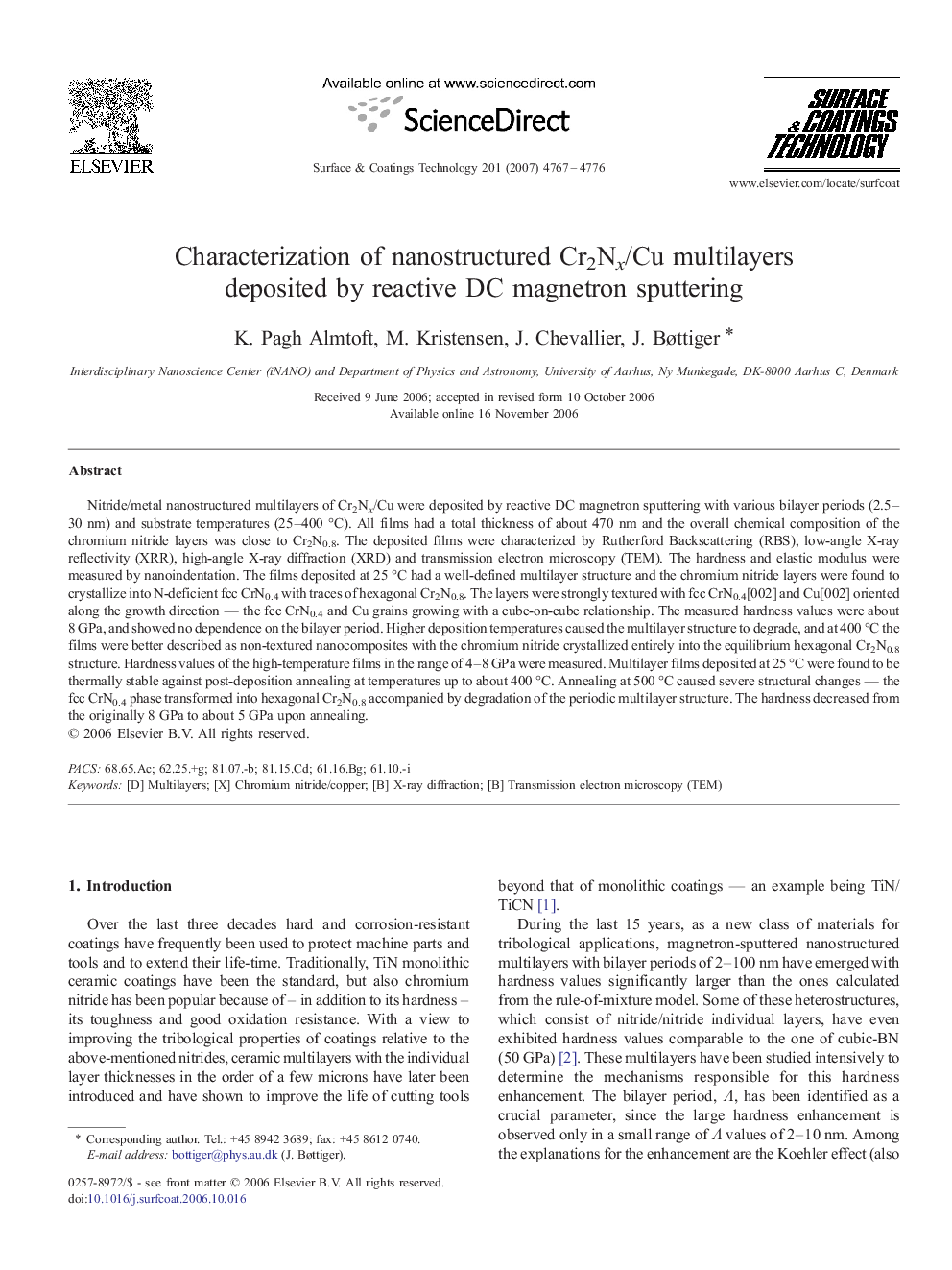| Article ID | Journal | Published Year | Pages | File Type |
|---|---|---|---|---|
| 1662624 | Surface and Coatings Technology | 2007 | 10 Pages |
Nitride/metal nanostructured multilayers of Cr2Nx/Cu were deposited by reactive DC magnetron sputtering with various bilayer periods (2.5–30 nm) and substrate temperatures (25–400 °C). All films had a total thickness of about 470 nm and the overall chemical composition of the chromium nitride layers was close to Cr2N0.8. The deposited films were characterized by Rutherford Backscattering (RBS), low-angle X-ray reflectivity (XRR), high-angle X-ray diffraction (XRD) and transmission electron microscopy (TEM). The hardness and elastic modulus were measured by nanoindentation. The films deposited at 25 °C had a well-defined multilayer structure and the chromium nitride layers were found to crystallize into N-deficient fcc CrN0.4 with traces of hexagonal Cr2N0.8. The layers were strongly textured with fcc CrN0.4[002] and Cu[002] oriented along the growth direction — the fcc CrN0.4 and Cu grains growing with a cube-on-cube relationship. The measured hardness values were about 8 GPa, and showed no dependence on the bilayer period. Higher deposition temperatures caused the multilayer structure to degrade, and at 400 °C the films were better described as non-textured nanocomposites with the chromium nitride crystallized entirely into the equilibrium hexagonal Cr2N0.8 structure. Hardness values of the high-temperature films in the range of 4–8 GPa were measured. Multilayer films deposited at 25 °C were found to be thermally stable against post-deposition annealing at temperatures up to about 400 °C. Annealing at 500 °C caused severe structural changes — the fcc CrN0.4 phase transformed into hexagonal Cr2N0.8 accompanied by degradation of the periodic multilayer structure. The hardness decreased from the originally 8 GPa to about 5 GPa upon annealing.
